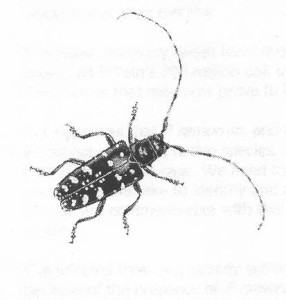Revise Decade-Old Policies that Do Not Prevent Introductions
Despite regulations adopted 9 or more years ago, tree-killing insects continue to enter the U.S. in wood packaging. Aggressive enforcement is needed now to prevent further huge ecological and economic losses.
Disasters already introduced via this pathway
As Americans import more stuff, the risk rises that larvae of tree-killing insects will be enter the country hiding in wooden crates, pallets, etc. – called “solid wood packaging” or SWPM. For more information on this threat, the agencies responsible, and actions taken or proposed, visit here.
Damaging pests still found in SWPM
USDA APHIS (for more information about APHIS, read “Invasives 101” at www.cisp.us) required treatment of wood packaging from China 15 years ago, and treatment of wood packaging from other trade partners 9 years ago! Yet, a small proportion of incoming wood packaging still carries tree-killing pests. As many as 13,000 shipping containers harboring tree-killing pests probably enter the country each year – or 35 each day. [i] The Asian longhorned (illustrated below) is among the pests still detected in wood packaging from China. [ii]
Cities that import the most goods from Asia are at particular risk – New York, Chicago, Los Angeles and Long Beach. Others are also at risk: Washington, D.C.; Virginia Beach; Jacksonville. [To see a more complete list, visit here]
What the Government Has Done
While USDA APHIS has cracked down on U.S. producers of wood packaging who cheat and is promoting workshops to educate our trade partners on wood packaging treatment requirements (see write-up on www.CISP.us referenced above), the government should do more to protect our forests.
What More Can be Done
- At present, U.S. policy allows an importer to be caught 5 times in 1 year with wood packaging that does not comply with the regulatory requirements. Requirements adopted a decade or more ago should be enforced strictly! The Bureau of Customs and Border Protection and USDA APHIS should instead penalize all importers whose wood packaging does not comply with regulatory requirements.
- The Bureau of Customs and Border Protection should incorporate the wood packaging requirements into its “Customs-Trade Partnership Against Terrorism” (C-TPAT) program .
- USDA APHIS should re-examine the economic pros and cons of requiring importers to switch to packaging made from materials other than wooden boards. The new review should incorporate the high economic and ecological costs imposed by insects introduced via the wood packaging pathway.
- The President’s Office of Management and Budget should allow APHIS to finalize regulations – proposed in 5 years ago! – that would apply the same treatment requirements to wood packaging used in trade between the US and Canada. (Canada has been ready to adopt this measure for several years.)
[i] Haack RA, Britton KO, Brockerhoff EG, Cavey JF, Garrett LJ, et al. (2014) Effectiveness of the International Phytosanitary Standard ISPM No. 15 on Reducing Wood Borer Infestation Rates in Wood Packaging Material Entering the United States. PLoS ONE 9(5): e96611. doi:10.1371/journal.pone.0096611
[ii] Haack, R.A., F. Herard, J. Sun, J.J. Turgeon. 2009. Managing Invasive Populations of Asian Longhorned Beetleand Citrus Longhorned Beetle: A Worldwide Perspective. Annu. Rev. Entomol. 2010. 55:521-46; these authors report six separate introductions; after the article was published, a seventh was detected in Clermont County, Ohio; and a new outbreak was detected near Toronto, Ontario. Also, Philip Berger, Executive Director PPQ Science and Technology, Presentation to the Continental Dialogue on Non-Native Forest Insects and Diseases, November 3, 2014
